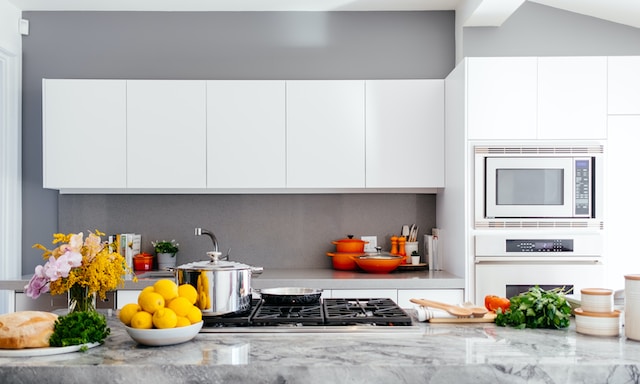 Photo: Unsplash
Photo: Unsplash
In the world of interior design, the kitchen is one of the most exciting spaces to explore. It’s the heart of the home, where culinary creativity meets comfort and functionality.
And in recent years, a trend that has been gaining prominence is the creation of a dry and wet kitchen, a concept that is revolutionizing how we view this essential space.
+ Under the scorching sun: 6 tips for caring for plants in extreme heat
What Is a Dry and Wet Kitchen?
To understand the difference between dry and wet, it’s important to grasp the basic principles of this layout. The idea behind this concept is to divide the kitchen into two distinct areas: the “dry” and the “wet.”
Dry
This part is dedicated to activities related to food preparation, storage, and typically includes the dining area. Here, you’ll find the countertop, stove, oven, refrigerator, and storage cabinets. The “dry” kitchen is so named because it’s where activities that don’t involve excessive water take place.
Wet
This part is reserved for activities involving water, such as the sink, dishwasher, and sometimes even a laundry area. It’s the space where you handle dishwashing, vegetable washing, and other tasks that require water. The “wet kitchen” is designed to prevent water and moisture splashes from spreading to the “dry kitchen.”
The separation of these two areas creates a highly functional and efficient environment. Let’s now explore the benefits of this innovative layout.
Benefits of a Dry and Wet Kitchen:
- Efficiency
One of the key advantages of this design is efficiency. With clearly defined dry and wet areas, multiple people can work in the kitchen simultaneously without getting in each other’s way. For example, someone can prepare a meal while another person washes dishes without interference.
- Hygiene
The separation of dry and wet areas contributes to a more hygienic space. This prevents food from coming into direct contact with moist surfaces, reducing the risk of cross-contamination.
- Aesthetic Design
In addition to practical benefits, the layout of a dry and wet kitchen also offers incredible opportunities for aesthetic design. You can play with materials, colors, and textures to create an impressive and cohesive look for each area.
- Organization
This division makes kitchen organization easier. Each utensil and appliance has a designated place, making it easier to maintain order and find what you need when cooking.
- Noise Reduction
The wet area can also serve as a kind of sound barrier, helping to reduce the noise from the dishwasher and sink, which is especially useful in open spaces.
- Flexibility
Flexibility is another important feature of this layout. You can adjust the division between the dry and wet areas according to your needs, making it suitable for your family’s dynamics.
Dry and wet kitchens are redefining how we use this vital space in our homes. In addition to their impressive functionality, they also offer incredible opportunities to express your creativity in interior design.
If you’re considering a renovation, it’s worth considering this innovative concept that is gaining more and more followers. After all, a well-designed kitchen is the secret to creating delicious meals and memorable moments with family.
Stay updated on news through our Facebook page!

